| Listing 1 - 7 of 7 |
Sort by
|
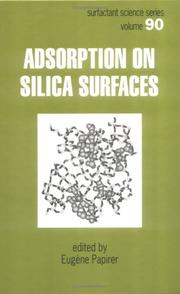
ISBN: 0824700031 9780824700034 Year: 2000 Volume: 90 Publisher: New York Dekker
Abstract | Keywords | Export | Availability | Bookmark
 Loading...
Loading...Choose an application
- Reference Manager
- EndNote
- RefWorks (Direct export to RefWorks)
Adsorption --- Silica --- -Silicon dioxide --- Oxides --- Silicon compounds --- Sorption --- Separation (Technology) --- Surface chemistry --- Surfaces --- -Surfaces --- fysicochemie --- Surfaces. --- Silicon dioxide --- Silica - Surfaces. --- ADSORPTION --- SILICA --- SURFACE --- PROPERTIES
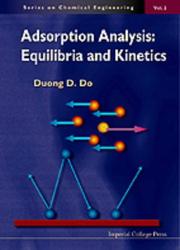
ISBN: 1860941303 1860941370 Year: 1998 Publisher: London Imperial College Press
Abstract | Keywords | Export | Availability | Bookmark
 Loading...
Loading...Choose an application
- Reference Manager
- EndNote
- RefWorks (Direct export to RefWorks)
A discussion of topics of equilibria and kinetics of adsorption in porous media. Fundamental equilibria and kinetics are dealt with for homogeneous as well as heterogeneous particles. Five chapters of the book deal with kinetics. Single component as well as multicomponent systems are discussed. In kinetics analysis, it deals with the various mass transport processes and their interactions inside a porous particle. Conventional approaches as well as the approach using the Maxwell-Stefan equations are presented. Various measures to measure diffusivity, such as the Differential Adsorption Bed (DAB), the time lag, the diffusion cell, chromatography, and the batch adsorption methods are also covered by the book. A number of programming codes written in MatLab language are included so that readers can use then directly to better understand the behaviour of single and multicomponent adsorption systems.
Adsorption --- Chemical engineering --- Gases --- MATLAB --- Porous materials --- Solids --- Porous media --- Materials --- Porosity --- Absorption --- Sorption --- Separation (Technology) --- Surface chemistry --- Data processing --- Absorption and adsorption --- Surfaces --- Physicochemistry --- adsorptie (chemische technologie) --- evenwicht (chemie) --- fysicochemie --- kinetica --- Adsorption kinetics --- Equilibrium
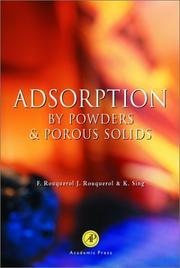
ISBN: 0125989202 9780080526010 0080526012 1493301853 9786611057060 1281057061 9780125989206 Year: 1999 Publisher: San Diego Academic Press
Abstract | Keywords | Export | Availability | Bookmark
 Loading...
Loading...Choose an application
- Reference Manager
- EndNote
- RefWorks (Direct export to RefWorks)
The declared objective of this book is to provide an introductory review of the various theoretical and practical aspects of adsorption by powders and porous solids with particular reference to materials of technological importance. The primary aim is to meet the needs of students and non-specialists, who are new to surface science or who wish to use the advanced techniques now available for the determination of surface area, pore size and surface characterization. In addition, a critical account is given of recent work on the adsorptive properties of activated carbons, oxides, clays and zeoli
Surface chemistry --- fysicochemie --- Adsorption. --- Porous materials. --- Powders. --- Porous materials --- Powders --- Surface chemistry. --- Powder --- Bulk solids --- Crystals --- Sorption --- Separation (Technology) --- Chemistry, Surface --- Interfaces, Chemistry of --- Surface phenomena --- Surfaces (Chemistry) --- Chemistry, Physical and theoretical --- Capillarity --- Surface energy --- Surface tension --- Surfaces (Physics) --- Surfaces. --- Adsorption --- Adsorption: chemical surface phenomena --- Porous media --- Materials --- Porosity --- 544.723.2
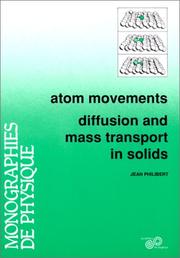
ISBN: 2868831613 9782868831613 Year: 1991 Publisher: Les Ulis, France : Editions de Physique,
Abstract | Keywords | Export | Availability | Bookmark
 Loading...
Loading...Choose an application
- Reference Manager
- EndNote
- RefWorks (Direct export to RefWorks)
Kirkendall effect. --- Transport theory. --- Diffusion. --- Kirkendall effect --- Transport theory --- Diffusion --- Gases --- Liquids --- Physics --- Separation (Technology) --- Solution (Chemistry) --- Solutions, Solid --- Matter --- Packed towers --- Semiconductor doping --- Boltzmann transport equation --- Transport phenomena --- Mathematical physics --- Particles (Nuclear physics) --- Radiation --- Statistical mechanics --- Bulk diffusion --- Diffusion in solids --- Grain boundary diffusion --- Lattice diffusion --- Pipe diffusion --- Solids --- Volume diffusion --- Properties
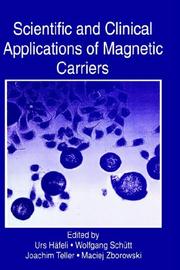
ISBN: 0306456877 1441932836 1475764820 Year: 1997 Publisher: New York (N.Y.) Plenum
Abstract | Keywords | Export | Availability | Bookmark
 Loading...
Loading...Choose an application
- Reference Manager
- EndNote
- RefWorks (Direct export to RefWorks)
The discovery of uniform latex particles by polymer chemists of the Dow Chemical Company nearly 50 years ago opened up new exciting fields for scientists and physicians and established many new biomedical applications. Many in vitro diagnostic tests such as the latex agglutination tests, analytical cell and phagocytosis tests have since become rou tine. They were all developed on the basis of small particles bound to biological active molecules and fluorescent and radioactive markers. Further developments are ongoing, with the focus now shifted to applications of polymer particles in the controlled and di rected transport of drugs in living systems. Four important factors make microspheres interesting for in vivo applications: First, biocompatible polymer particles can be used to transport known amounts of drug and re lease them in a controlled fashion. Second, particles can be made of materials which bio degrade in living organisms without doing any harm. Third, particles with modified surfaces are able to avoid rapid capture by the reticuloendothelial system and therefore en hance their blood circulation time. Fourth, combining particles with specific molecules may allow organ-directed targeting.
Magnetic separation. --- Biomagnetism --- Biomolecules --- Séparation magnétique --- Biomagnétisme --- Biomolécules --- Magnetic properties --- Propriétés magnétiques --- 537.635 <063> --- -Magnetic separation --- Separation (Technology) --- Biological molecules --- Molecules --- Molecular biology --- Biological magnetism --- Magnetism, Biological --- Biophysics --- Electromagnetism --- Electrophysiology --- Human body --- Magnetic resonances--Congressen --- Magnetic fields --- 537.635 <063> Magnetic resonances--Congressen --- Séparation magnétique --- Biomagnétisme --- Biomolécules --- Propriétés magnétiques --- Magnetic separation --- Biophysics. --- Biological physics. --- Biological and Medical Physics, Biophysics. --- Biological physics --- Biology --- Medical sciences --- Physics
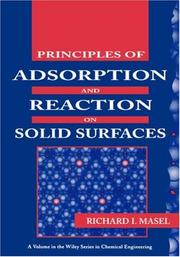
ISBN: 0471303925 9780471303923 Year: 1996 Publisher: New York (N.Y.) Wiley
Abstract | Keywords | Export | Availability | Bookmark
 Loading...
Loading...Choose an application
- Reference Manager
- EndNote
- RefWorks (Direct export to RefWorks)
Chemical kinetics --- Adsorption: chemical surface phenomena --- 544.723.2 --- Adsorption. --- Chemical kinetics. --- Surface chemistry. --- Adsorption --- Surface chemistry --- Chemistry, Surface --- Interfaces, Chemistry of --- Surface phenomena --- Surfaces (Chemistry) --- Chemistry, Physical and theoretical --- Capillarity --- Surface energy --- Surface tension --- Surfaces (Physics) --- Chemical reaction, Kinetics of --- Chemical reaction, Rate of --- Chemical reaction, Velocity of --- Chemical reaction rate --- Chemical reaction velocity --- Kinetics, Chemical --- Rate of chemical reaction --- Reaction rate (Chemistry) --- Velocity of chemical reaction --- Chemical affinity --- Reactivity (Chemistry) --- Sorption --- Separation (Technology)
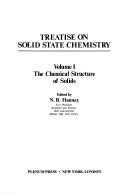
ISBN: 0306350513 0306350521 030635053X 0306350548 0306350556 0306350564 0306350572 0306350505 1475711220 1475711204 1461343151 1461343135 1468408313 1468408291 146842663X 1468426613 1468426664 1468426648 1468480847 1468480820 9780306350511 9780306350559 9780306350542 9780306350535 9780306350566 9780306350573 9780306350528 Year: 1974 Publisher: New York, N.Y. Plenum Press
Abstract | Keywords | Export | Availability | Bookmark
 Loading...
Loading...Choose an application
- Reference Manager
- EndNote
- RefWorks (Direct export to RefWorks)
Cristall chemistry --- fysicochemie --- Chemical bonds --- Crystals --- Defects --- 54-16 --- 541.124-16 --- #WSCH:MACB --- 538.9 --- 620.193.4 --- 541.183 --- Reactivity (Chemistry) --- -Crystallography --- Solids --- Solid state chemistry --- -Chemistry, Solid state --- Chemistry, Physical and theoretical --- Solid state physics --- Transparent solids --- Leptology --- Physical sciences --- Mineralogy --- Bonds, Chemical --- Chemical structure --- Overlap integral --- Quantum chemistry --- Valence (Theoretical chemistry) --- Chemical reaction, Conditions and laws of --- Chemical reactions --- 541.183 Contact systems. Adsorption. Surface chemistry --- Contact systems. Adsorption. Surface chemistry --- 620.193.4 Chemical corrosion. Effect of various corrosives, acids, alkalis. Caustic embrittlement etc. --- Chemical corrosion. Effect of various corrosives, acids, alkalis. Caustic embrittlement etc. --- 538.9 Physics of condensed matter (in liquid state and solid state) --- Physics of condensed matter (in liquid state and solid state) --- 54-16 Solid phase --- Solid phase --- Crystallography --- Powders --- 541.124-16 Chemical dynamics in general. Reaction mechanism in general--?-16 --- 541.124-16 Limits of reactions--?-16 --- Chemical dynamics in general. Reaction mechanism in general--?-16 --- Limits of reactions--?-16 --- Chemical bonds. --- Crystallography. --- Reactivity (Chemistry). --- Solid state chemistry. --- Solids. --- Defects. --- Monograph --- DIFFUSION --- OXIDATION --- SINTERING --- POLYMERS --- PHOTOGRAPHY --- CORROSION --- ELECTROCHEMISTRY --- solid state reactions --- Diffusion. --- Oxidation. --- Sintering. --- Polymers. --- Photography. --- Electrochemistry. --- Polymere --- Polymeride --- Polymers and polymerization --- Macromolecules --- Frittage --- Additive manufacturing --- Iron --- Powder metallurgy --- Isostatic pressing --- Autoxidation --- Gases --- Liquids --- Physics --- Separation (Technology) --- Solution (Chemistry) --- Solutions, Solid --- Matter --- Packed towers --- Semiconductor doping --- Metallurgy --- Diffusion --- Properties --- Crystal chemistry --- -Physics of condensed matter (in liquid state and solid state) --- Crystals - Defects --- Superconductivity --- Dielectric properties of solids --- Magnetic properties of solids --- -Leptology --- Chemistry, Solid state --- CHEMICAL BONDS --- CRYSTALS --- SOLID STATE CHEMISTRY --- DEFECTS --- -Defects --- Surface chemistry --- Reactivity (chemistry)
| Listing 1 - 7 of 7 |
Sort by
|

 Search
Search Feedback
Feedback About UniCat
About UniCat  Help
Help News
News